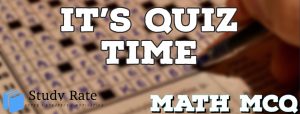We have provided you with Extra and Important Questions from Class 10 Science Chapter 10 Light Reflection and Refraction. This Extra and Important Questions will help you to score 100% in your Board Exams. These extra questions will be helpful to revise the important topics and concepts.
Join our Telegram Channel, there you will get various e-books for CBSE 2024 Boards exams for Class 9th, 10th, 11th, and 12th.
Table of Contents
Light Reflection and Refraction Class 10 Important Questions with Answers Science Chapter 10
Extra Questions for Class 10 Science Chapter 10 Very Short Answer Type
Question: Define focal length.
Answer: Focal length (f): The distance between the pole and principal focus (F) of a spherical mirror is called the focal length of the mirror. It is denoted by f.
f = R/2

Question: Define one dioptre.
Answer: 1 dioptre is the power of a lens whose focal length is 1 metre. 1 D = 1 m-¹
Question: Define focus.
Answer: Principal focus: A point on the principal axis of a spherical mirror where the rays of light parallel to the principal axis meet or appear to meet after reflection from the spherical mirror is called principal focus.
Question: What is concave and convex mirror?
Answer:
- Concave mirror: A spherical mirror, whose reflecting surface is curved inwards, that is it faces towards the centre of the sphere, is called a concave mirror.
- Convex mirror: A spherical mirror whose reflecting surface is curved outwards, is called a convex mirror.
Question: Define
1. Reflection of light 2. Beam of light
Answer:
- Reflection: When light falls on a surface and bounces back to the medium, the phenomena is called reflection.
- Beam: A beam is a bundle of rays, which originates from a common source and travels in the same direction.
Question: Define light and write its properties.
Answer: Light: It is a form of energy which produces the sensation of sight.Light exhibits dual nature i.e., wave as well as particle nature.It travels with speed of 3 × 10⁸ m/s in vacuum. However, speed is inversely proportional to optical density of medium.
Question: Draw a ray diagram showing the path of rays of light when it enters with oblique incidence (i) from air into water.
Answer:

Question: Explain why a ray of light passing through the centre of curvature of a concave mirror, gets reflected along the same path.
Answer: The ray passing through the centre of curvature incident to the mirror along its normal so ∠i= ∠r = 0. Therefore, the ray retraces its path.
Question: What is the nature of the image formed by a concave mirror if the magnification produced by the mirror is +3?
Answer: Positive sign of magnification indicates that image is virtual, erect and enlarged.
Question: Between which two points of a concave mirror should an object be placed to obtain a magnification of -3?
Answer: Negative sign of magnification indicates that image is real and inverted. Also size of image is enlarged. So, object must be positioned between F and 2F, i.e. C.
Question: “The refractive index of carbon disulphide is 1.63.” What is the meaning of this statement in relation to speed of light?
Answer: Speed of light in carbon disulphide is 1/1.63 times the speed of light in free space.5. The outer surface of a hollow sphere of aluminium of radius 50 cm is to be used as a mirror.
Question: What will be the focal length of this mirror? Which type of spherical mirror will it provide?
Answer: f = R/2 = 50/2 = 25 cm. It will form a convex mirror
Question: Between which two points related to a concave mirror should an object be placed to obtain on a screen an image twice the size of the object.
Answer: Real Image: Between F and C.
Question: How should a ray of light be incident on a rectangular glass slab so that it comes out from the opposite side of the slab without being displaced?
Answer: Along the normal to the surface or at an incident angle of incidence = 0°.
Question: A girl was playing with a thin beam of light from her laser torch by directing it from different directions on a convex lens held vertically. She was surprised to see that in a particular direction the beam of light continues to move along the same direction after passing through the lens. State the reason for this observation.
Answer: A ray of light passing through the optical centre of the convex lens will continue to move along the same direction after refracting through the lens.
Question: A ray of light enters a rectangular glass slab of refractive index 1.5. It is found that the ray emerges from the opposite face of the slab without being displaced. If its speed in air is 3 × 108 m/s then what is its speed in glass?
Answer: We know that,

Extra Questions for Class 10 Science Chapter 10 Short Answer Type
Question: Draw the ray diagrams showing the image formation by a concave lens.
Answer:
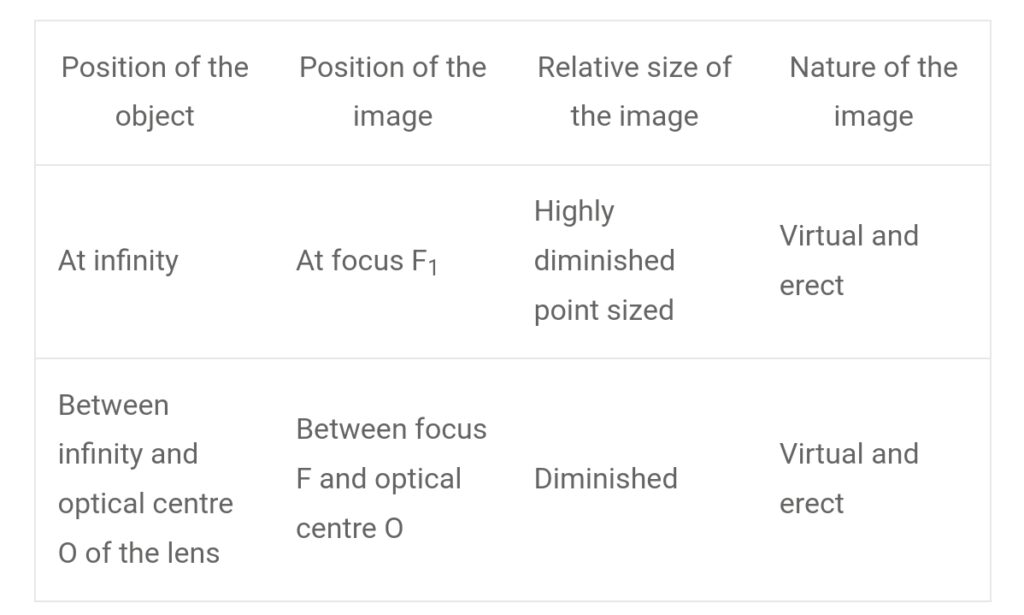
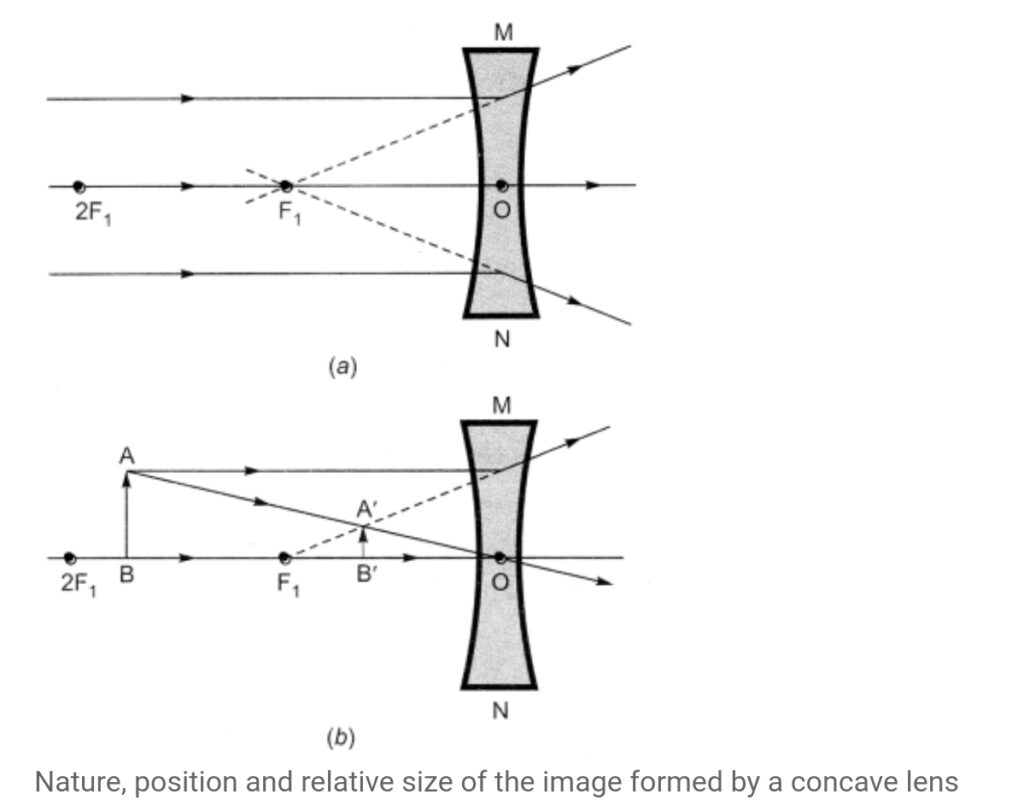
Question: State laws of reflection.
Answer:
Laws:
- The angle of incidence is equal to the angle of reflection.
- The incident ray, the normal to the mirror at the point of incidence and reflected ray, all lie in the same plane.
These laws of reflection are applicable to all types of reflecting surfaces including spherical surfaces.
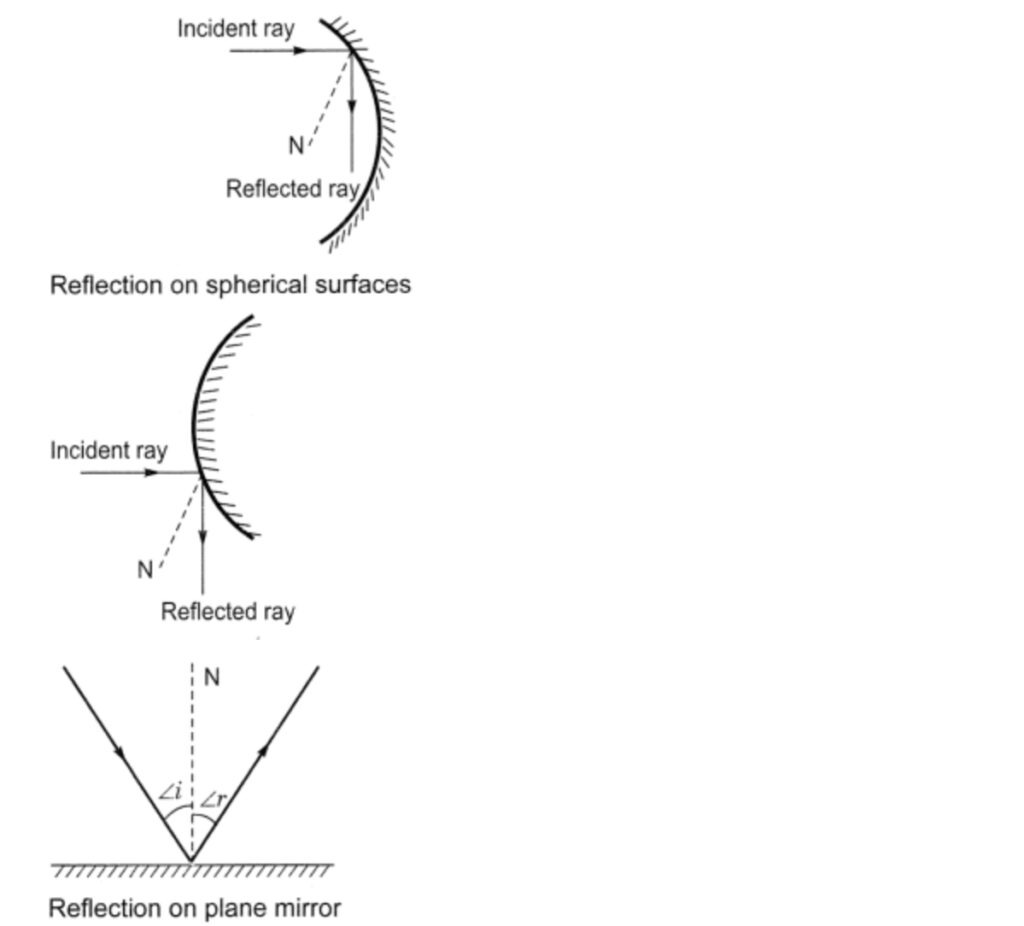
Question: Write four difference between real and virtual image.
Answer:
Real image:
- When rays of light after reflection meets at a point real image is formed.
- Real image can be obtained on screen.
- Real image is formed in front of mirror.
- Real image is always inverted.
Virtual image:
- When rays of light do not actually meet but appear to meet at a point after reflection, virtual image is formed.
- Virtual image cannot be obtained on screen.
- Virtual image is formed behind the mirror.
- Virtual image is always erect.
Question: An object of height 6 cm is placed perpendicular to the principal axis of a concave lens of focal length 5 cm. Use lens formula to determine the position, size and nature of the image if the distance of the object from the lens is 10 cm.
Answer: h = 6 cm, f = -5 cm, u = -10 cm
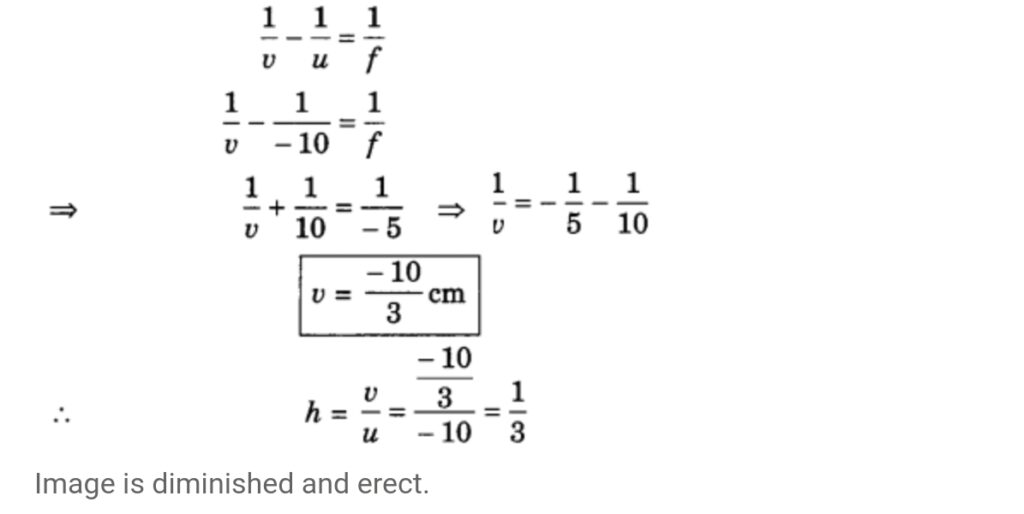
Question: Define refractive index and relative refractive index.
Answer: Refractive index: The ratio of speed of light in vacuum (c) to the speed of light in any medium (v) is called refractive index of the medium.

Relative refractive index: The relative refractive index of a medium with respect to other medium is the ratio of the speed of light in the first medium with respect to the second medium.
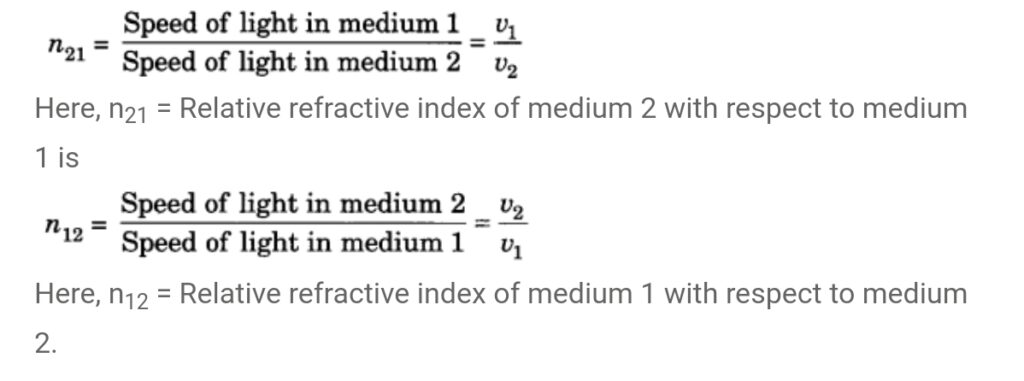
Question: Write some illustrations of refraction.
Answer: Some applications of refraction:
- Bottom of a tank or a pond containing water appears to be raised due to refraction.
- When a thick glass slab is placed over some printed matter the letters appear raised when viewed through the glass slab.
- When a pencil is partly immersed in water, it appears to be bent at the interface of air and water.
- A lemon kept in water in a glass tumbler appears to be bigger than its actual size, when viewed from the sides.
Question: Name the type of mirror used in solar furnace. How is high temperature achieved by this device? (CBSE 2012)
Answer: Concave mirror is used in solar furnace. The solar furnace is placed at the focus of the large concave reflector. The concave reflector focus the Sim’s heat rays on the furnace and a high temperature is achieved.
Question: Define power of a lens. What is its unit? One student uses a lens of focal length 50 cm and another of -50 cm. What is the nature of the lens and its power used by each of them? (NCERT Exemplar)
Answer: Power of a lens: The power of a lens is defined as reciprocal of its focal length.P = 1/f
f= focal length (in metre)
The SI unit of power is ‘dioptre’. It is denoted by the letter D.
Here, f= 50 cm = 0.5 m

Question: Define lens. What is difference between convex and concave lens?
Answer: Lens: A transparent medium bound by two surfaces, of which one or both surfaces are spherical, forms a lens:
Convex lens: A lens having two spherical surfaces, bulging outwards is called a double convex lens or convex lens.
- It is thicker at the middle as compared to the edges.
- Convex lens converges light.
- Hence, convex lens are called converging lens.
Concave lens: A double concave lens is bounded by two spherical surfaces curved inwards.
- It is thicker at edges than in the middle.
- Concave lens is diverging in nature.
Question: Write down the uses of concave and convex mirror.
Answer: Uses of mirrors:
1. Uses of concave mirrors:
- Concave mirrors are commonly used in torches, searchlights and vechicles headlights to get powerful beam of light.
- It is used in shaving mirrors to see large image of the face.
- Dentists use concave mirror to see large images of the teeth of patients.
- Large concave mirrors are used to concentrate sunlight to produce heat in solar furnace.
2. Uses of convex mirrors
- Convex mirrors are used as rear-view (wing) mirrors in vehicles.
- Convex mirrors are used as street reflectors because they are able to spread light over a bigger area.
Question: Draw a ray diagram to show the path of the reflected ray in each of the following cases. A ray of light incident on a convex mirror and concave mirror
Answer:
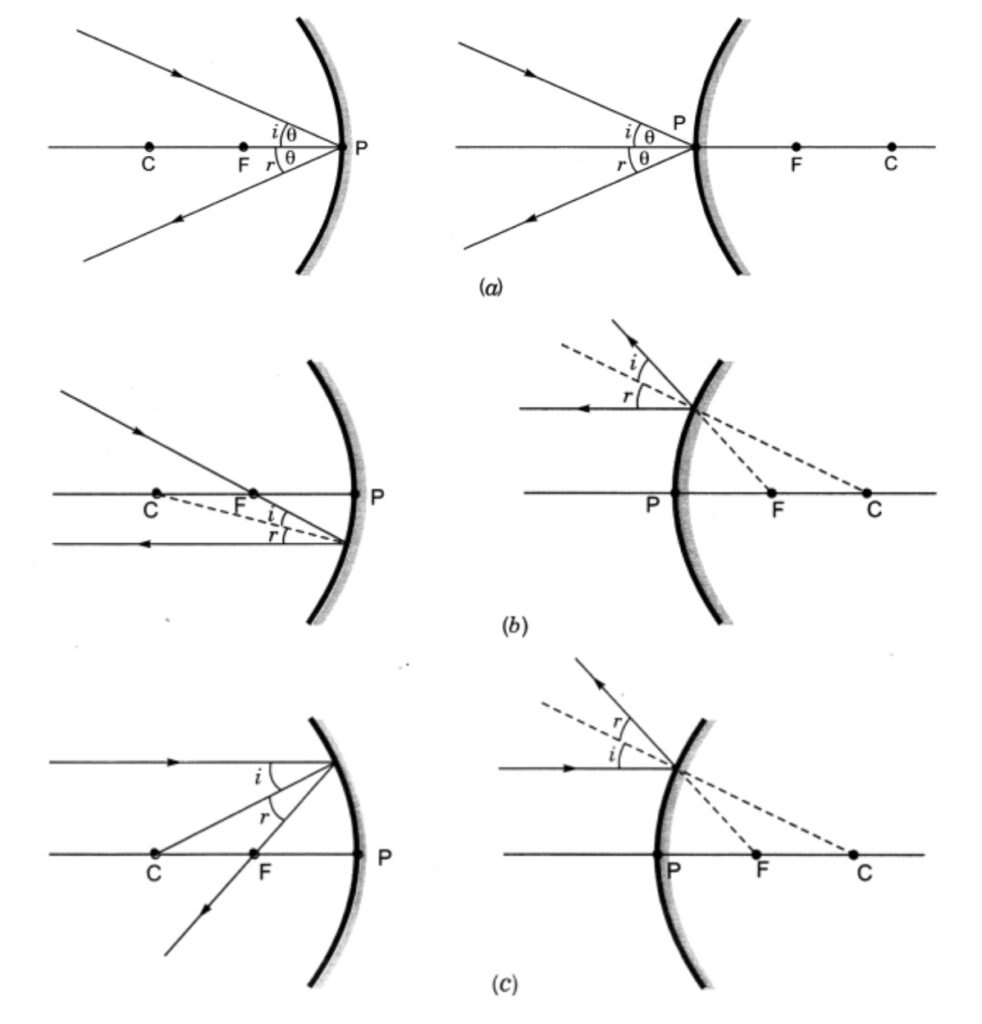
Extra Questions for Class 10 Science Chapter 10 Long Answer Type
Question: Write the laws of refraction. Explain the same with the help of ray diagram, when a ray of light passes through a rectangular glass slab. (NCERT Exemplar)
Answer: Laws of refraction:
- The incident ray, the refracted ray and the normal at the point of incidence, all lie in the same plane.
- The ratio of sine of angle of incidence to the sine of angle of refraction is a constant, for the light of a given colour and for the given pair of media. This law is also known as Snell’s law of refraction.
If i is the angle of incidence and r is angle of refraction.sin i / sin r = constant
Refraction through glass slab:
- The ray of light enters from rarer to denser medium at point O that is from air to glass and bends towards the normal.
- At ‘O’, the light ray enters from glass to air, that is, from a denser medium to a rarer medium.
- The light here bends away from normal.
- The emergent ray is parallel to the incident ray. However the light ray shifts slightly sideward.
- Refraction is due to change in speed of light when it enters from one medium to another.
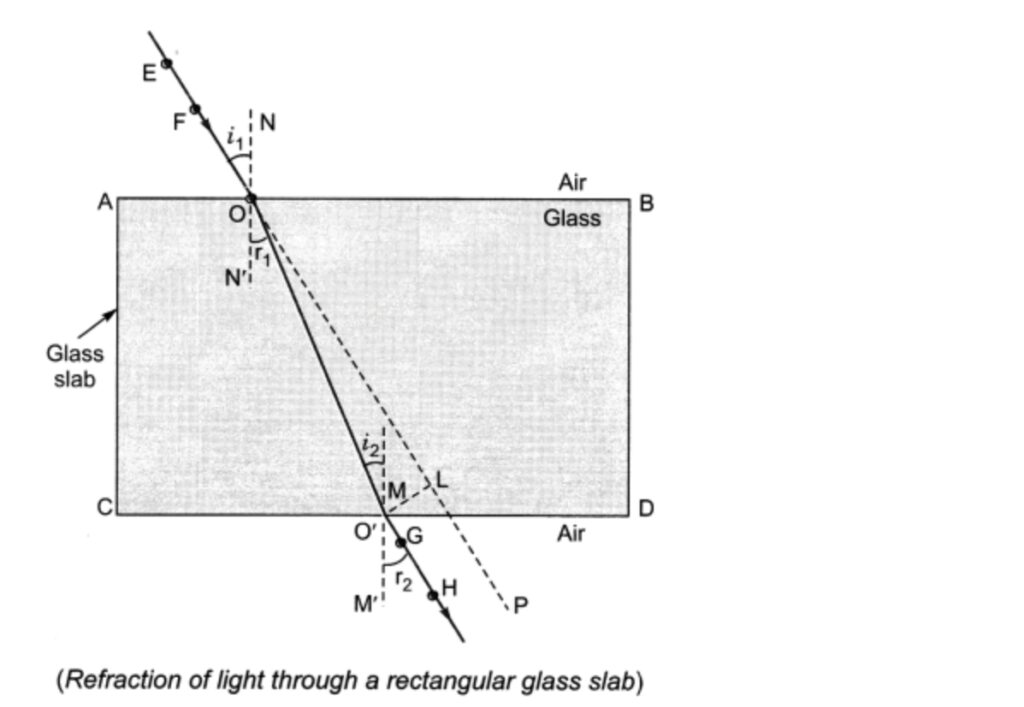
Question: Draw ray diagrams showing the image formation by a convex lens when an object is placed (NCERT Exemplar).
(a) between optical centre and focus of the lens.
(b) between focus and twice the focal length of the lens.
(c) at twice the focal length of the lens.
(d) at infinity.
(e) at the focus of the lens
Answer: Nature, position and relative size of the image formed by a convex lens for various positions of the object
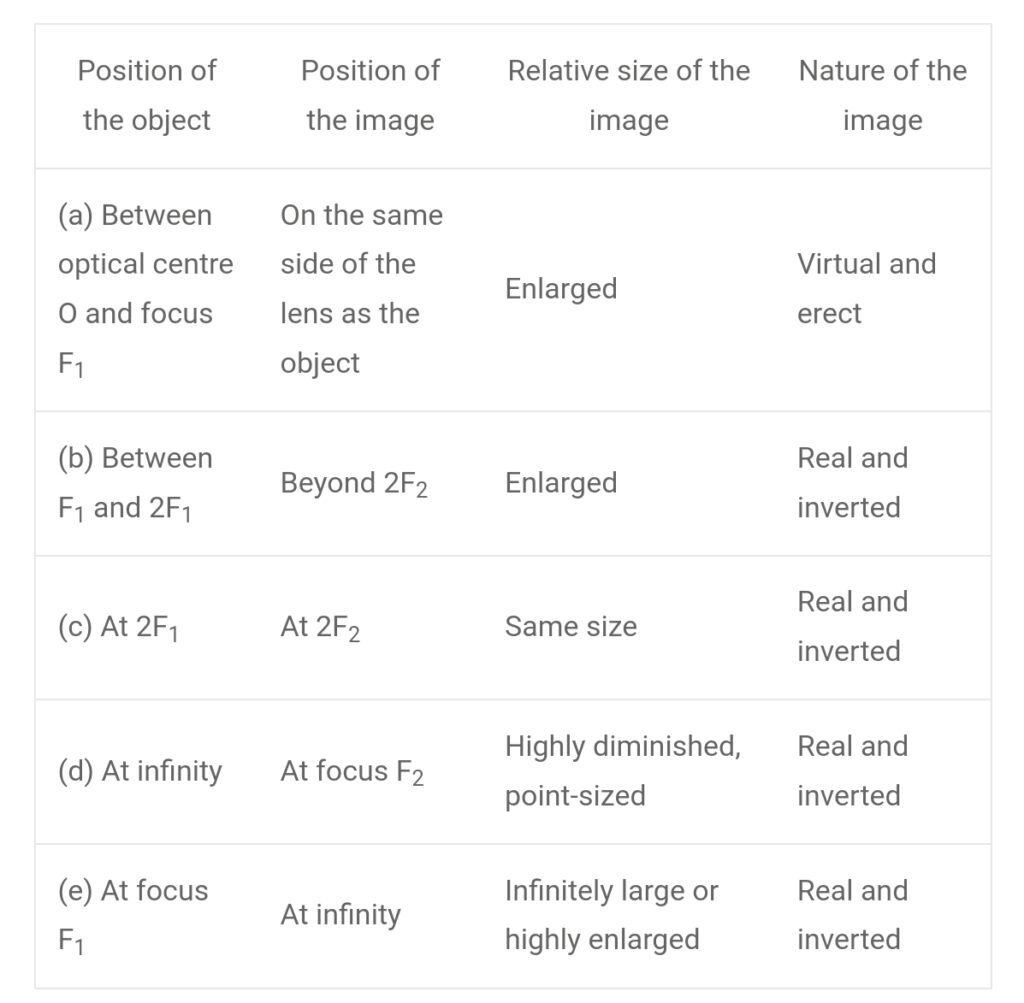
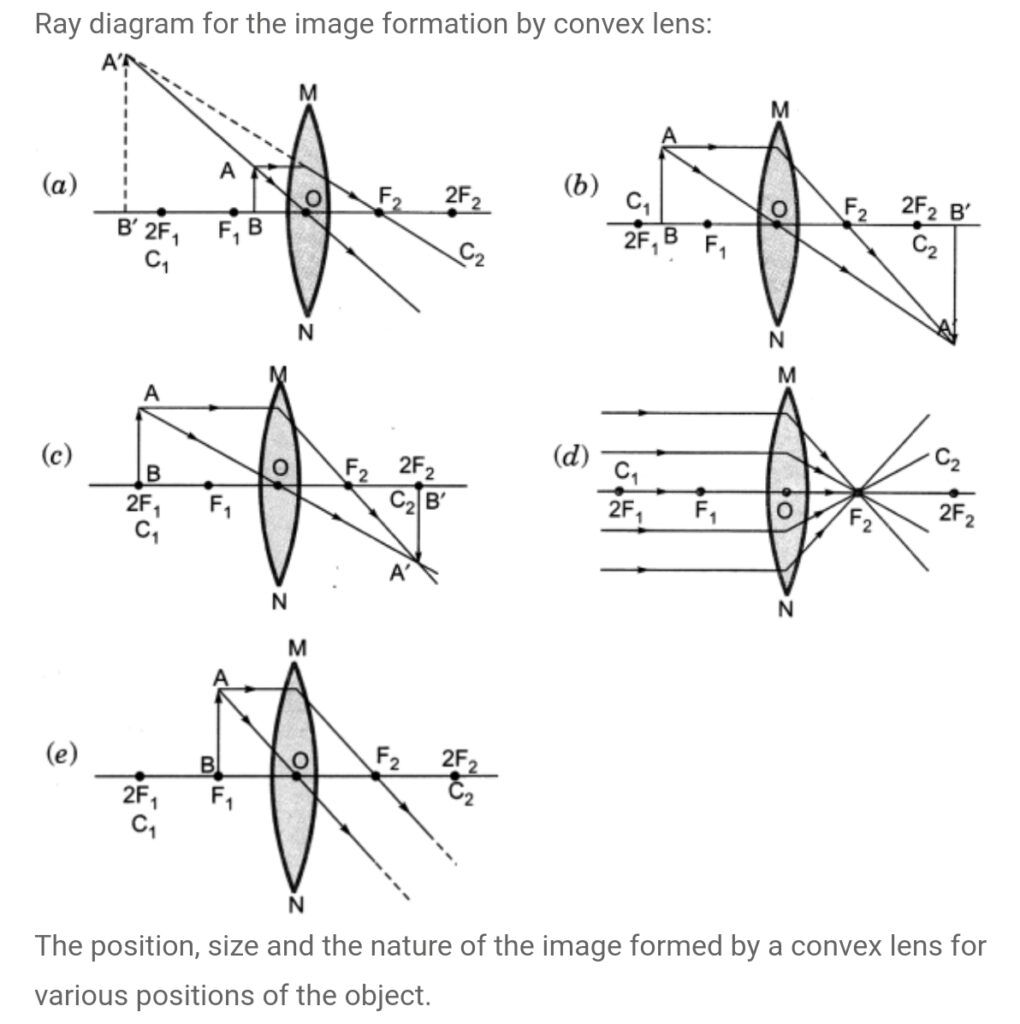
Question: To construct a ray diagram we use two rays of light which are so chosen that it is easy to determine their directions after reflection from the mirror. Choose these two rays and state the path of these rays after reflection from a concave mirror. Use these two rays to find the nature and position of the image of an object placed at a distance of 15 cm from a concave mirror of focal length 10 cm. (Delhi 2015, AI 2012)
Answer: We use two rays of light, one passing through the centre of curvature of a concave mirror, and another is parallel to the principal axis. After reflection, the ray passing through the centre of a concave mirror is reflected back along the same path and the ray parallel to the principal axis will pass through the principal focus.
u = -15 cm, f= -10 cm
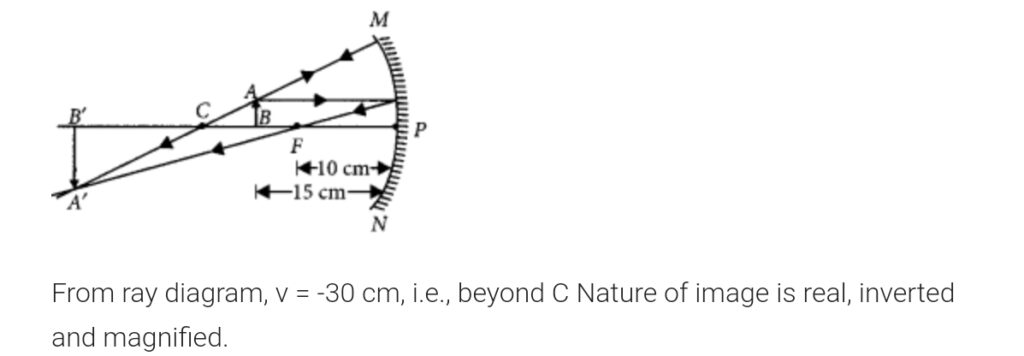
Question: A student wants to obtain an erect image of an object using a concave mirror of 12 cm focal length. What should be the range of distance of the candle flame from the mirror? State the nature and size of the image he is likely to observe. Draw a ray diagram to show the image formation in this case. (Foreign 2014)
Answer: To obtain an erect image, the object is placed in between pole and the focus of the concave mirror. So range of distance of the candle llame from the mirror is in between 12 cm.
Nature of the image = Virtual and erect.
Size of the image = Enlarged

Question: Mention the types of mirrors used as (i) rear view mirrors, (ii) shaving mirrors. List two reasons to justify your answer in each case. (Delhi 2013, Delhi 2012)
Answer:
(i) Convex mirror is used as rear view mirror because
(a) it gives erect image.
(b) it gives diminished image thus provides wider view of traffic behind the vehicle.
(ii) Concave mirror is used as shaving mirror because
(a) it gives erect image when mirror is close to the face.
(b) it gives enlarged image of the face so that a person can shave safely.


